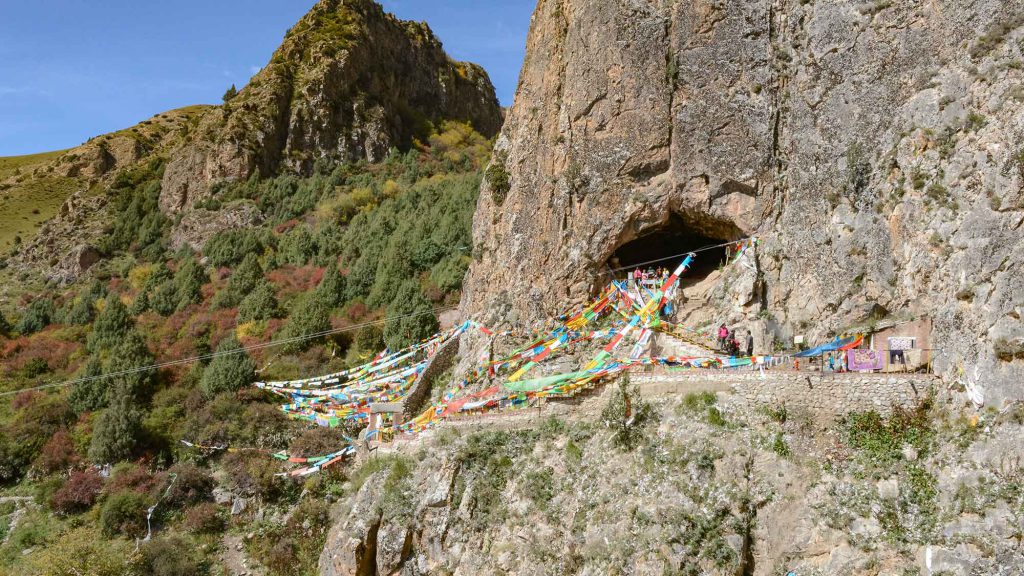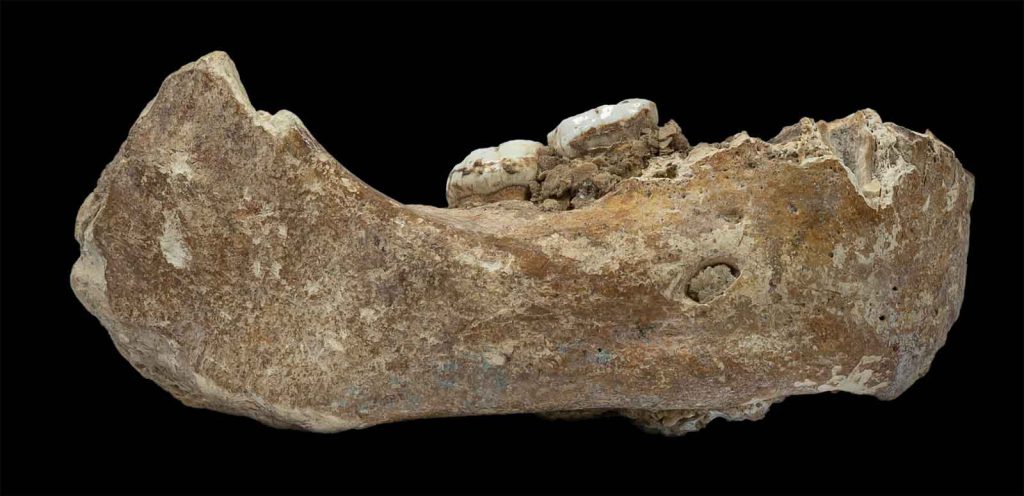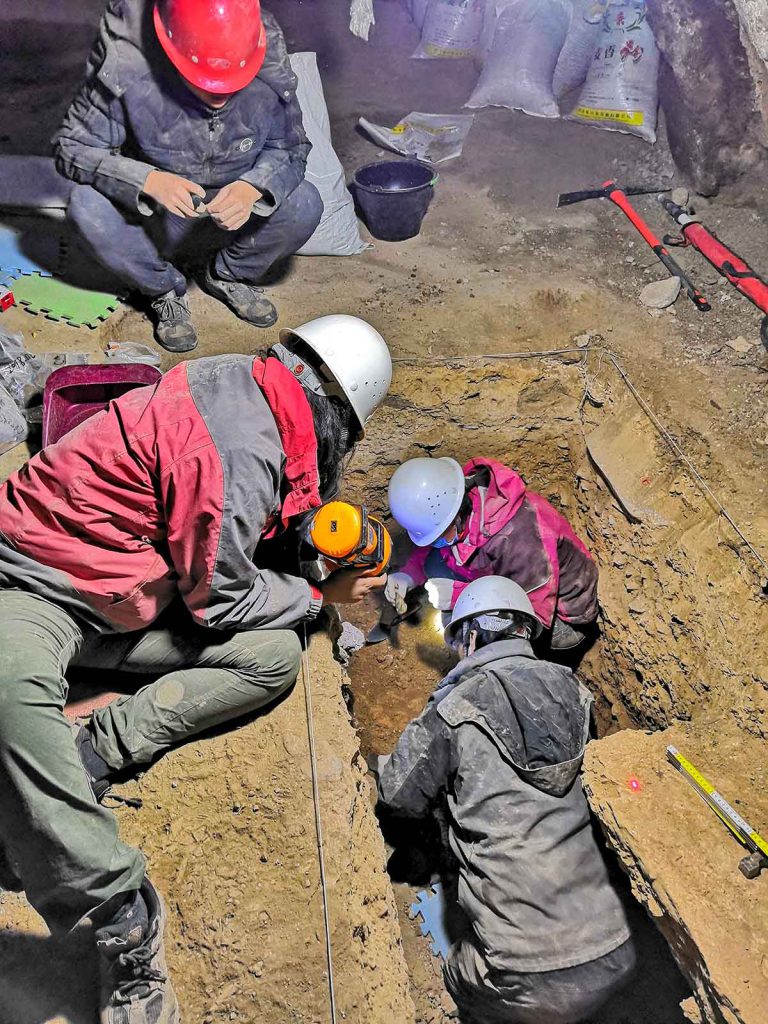How We Found an Elusive Hominin in China

Back in July 2016, I was in Spain’s Balearic Islands for a short holiday, when, coming back from a dive, I found an email from China waiting for me. The email asked my opinion about a strange mandible discovered on the Tibetan Plateau, in a place called Xiahe, China. At the sight of the pictures on my screen, my heart jumped. The fossil was quite complete and clearly nonmodern. Six weeks later, the archaeologist Dongju Zhang visited me in Leipzig, Germany, to discuss our collaboration. Before September ended, I was in Lanzhou, a town on the Yellow River at the foot of the Tibetan Plateau, to see the fossilized jaw in person. With a team of specialists, we were embarking on a remarkable adventure.
That jaw turned out to be Denisovan, results that we published today in the journal Nature. It is the first fossil of this elusive branch of hominins found outside of Siberia’s Denisova Cave, and it provides critical clues to what Denisovans looked like. With the jaw and a new molecular technique, we and other researchers can begin to identify as Denisovan other fossils that are already in collections.
Denisovans are one of the most mysterious groups of hominins. The research community’s fascination largely results from the extraordinary conditions of their discovery. In 2007, a team led by evolutionary geneticist Svante Pääbo from the Max Planck Institute for Evolutionary Anthropology in Leipzig, identified Neanderthal DNA in fossil bones coming from Okladnikov Cave in the Altai region of southern Siberia. Neanderthals had not previously been found so far east in Eurasia, and this discovery intensified the quest for ancient DNA throughout Siberia. These efforts led researchers to the Denisova Cave, where ancient DNA was also found. I was part of the group who published those results and, 10 years later, I still vividly remember the excitement of that discovery: the DNA from the Denisova Cave was not Neanderthal DNA—it was DNA of “something else.”
This “something else” was revealed to be a sister group that had split from the Neanderthals 450,000 years ago: Denisovans. The Denisova Cave offers outstanding conditions for the preservation of ancient DNA, with an average annual temperature close to zero degrees Celsius. Unfortunately, it has been more often occupied by carnivores than by hominins, and the bones found in the site are rarely bigger than a thumb, so the anatomy of Denisovans has remained elusive.
I had long suspected that Denisovans represented a substantial portion of the already-known Chinese fossil record; they just hadn’t been identified. Researchers know that traces of Denisovan DNA are found in people today all over East Asia and, to a greater extent, in Australia and Melanesia. Most likely, modern Homo sapiens moving into East Asia between 80,000 and 40,000 years ago interbred with Denisovans, including in places much further south than Siberia. But this has been impossible to prove. No Denisovan DNA has been extracted from existing fossils outside the Denisova Cave, generally because warmer environments do not preserve DNA for very long. And we couldn’t connect specimens from Denisova Cave to other fossils based on how they looked, as there wasn’t enough information available to do that. The Xiahe jaw, we hoped, could bridge the gap.
A couple of years ago one of my Ph.D. students, Frido Welker, demonstrated how ancient proteins, which can be preserved much longer than DNA, could, in the absence of DNA, be used to map out hominin groups. From the genome sequencing of Neanderthals and Denisovans, it is possible to predict the structure of these proteins and build a hominin family tree. The Xiahe mandible did not contain ancient DNA, but its teeth did yield degraded proteins. In 2017 we extracted these proteins—the first time this has been done from an archaic Chinese hominin—analyzed them, and found that they sit on the same branch of the hominin family tree as the specimens from the Denisova Cave. This was the kind of Eureka moment scientists have at most a few times in their lives.
This Xiahe jaw arrived on the scientific stage after a long journey. In 1980, an anonymous monk recovered the specimen while visiting the Baishiya Karst Cave, near Xiahe, to pray and meditate. Local people used to grind the “holy bones” collected in this cave to use them as medicine; this one, maybe more precious because it was clearly human, escaped destruction. Instead, it was offered to the Sixth Gung-Thang Living Buddha, who later passed it on to scientists at Lanzhou University. It was only in 2010 that a team from that university, led by paleoclimatologist and Quaternary geologist Fahu Chen, could start to investigate the Baishiya Karst Cave and its surroundings. Then, eventually, came that startling email to me in 2016.
We no longer know exactly where in the cave the jaw bone was found. But a crust of carbonates covering the fossil has been dated, using isotopic chemistry, to 160,000 years before present. That’s 120,000 years older than any archaeological traces of humans in the region. The Baishiya Karst Cave is more than 3,000 meters above sea level, at the foot of an impressive white cliff facing south toward the Ganjia Basin. It is a huge, dry, and relatively warm cave—a good place to live, especially during glacial episodes like the one developing 160,000 years ago.
In 2016, Zhang was finally allowed to start an archaeological survey inside the cave, which is a Buddhist sanctuary. She discovered stone artifacts and eventually began a more systematic excavation in 2018. Her team has so far found a large number of stone tools and animal bones with cut marks. These artifacts will provide invaluable information about how Denisovans lived and adapted to the environment on the high Tibetan Plateau.
The morphology of the Xiahe jaw is reminiscent of that of other Eurasian Middle Pleistocene hominins. As I hoped, this fossil now lets us say that other Chinese specimens, in particular an archaic mandible found off the shore of Taiwan and reported in 2015, most likely also belong to the Denisovans. Researchers have been searching for a long time for a fossil that can be used to “diagnose” Denisovans. A piece of skull was recently found in Denisova Cave, but it was too small to use to identify other fossils. The Xiahe mandible is complete enough to now revisit the rich Chinese hominin fossil collection and identify other fossils as Denisovan, even without DNA evidence. I have no doubt that in the future the sequencing of ancient proteins will complement these morphological analyses.
But the most extraordinary aspect of our findings, in my opinion, is the demonstration that such archaic hominins could successfully live in this challenging high-altitude environment, more than 120,000 years before modern H. sapiens settled on the Tibetan Plateau. It seems that a gene variant that helps modern populations on the Tibetan Plateau to adapt to high-altitude hypoxia was inherited from these Denisovans.
A new phase in the deciphering of human evolution in Asia has begun. Human evolution in this part of the world is much more complex than was thought; the simplistic model of a local and direct evolution from Homo erectus to present-day Asians needs to be abandoned. And from the Baishiya Karst Cave, there will surely be more discoveries to come.
Dongju Zhang contributed to this article.



































